BLOG | GERRY RAFFERTY ‘City To City’ album & ‘Baker Street’
By Phil Harding | Editor John Paul Palmer | 05 October 2021
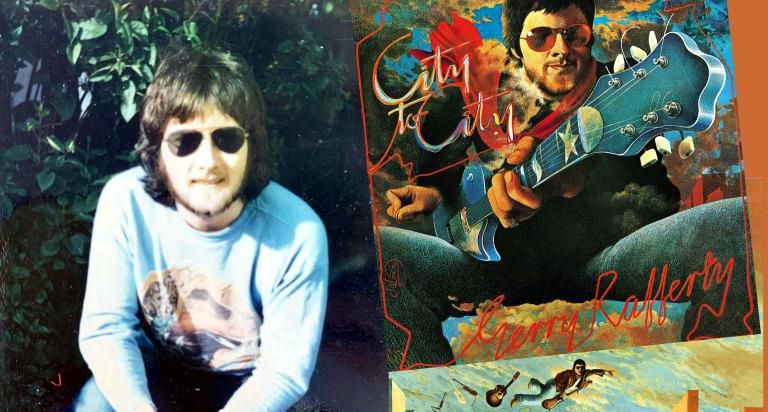
Phil Harding revisits unreleased mastertapes of some
of his earliest work as a young engineer at The Marquee Studios – mixes he
created of Gerry Rafferty’s highly-acclaimed ‘City To City’ album (released in 1978),
which includes the iconic international hit ‘Baker Street’. The album sold in the millions around the world and reached No. 1 in America. Phil looks
back at his work on the project during 1977…
This
first one has been influenced by the fact that it was mentioned in the recent podcast that I recorded with producer
Steve Anderson. I’ve done many interviews over the years and quite a few
podcasts in recent times, but no one has ever asked me about my work on the
Gerry Rafferty album ‘City To City’ until Steve did (although that bit was
actually edited out of the final podcast!). This coincides with the journey that
I’ve been on since 2019, digitally archiving my reel-to-reel analogue tape
collection. Having completed the transfers of many 4-tracks of my own demos and
24Club band recordings, I’ve since moved on to my stereo tape collection of
various 70s and early 80s projects that I engineered. Steve began the question
with crediting me for mixing the ‘City To City’ album. (Hear the full album here). I immediately had to correct him by stating that the final album does not
contain the mixes that I did at The Marquee, and that my contribution was
slimmed down to some minor overdubs that we recorded whilst going through what
turned out to be the first set of mixes (which were not finally used). Looking
back at these sessions after all this time, I think it’s good to call them
‘work in progress’, although at the time, it seemed like ‘failure’ to me.
I
probably had little or no idea who Gerry Rafferty was back then, but I’m sure I
would have been familiar with his 1972 UK/US top 10 hit as part of the band
Stealers Wheel, ‘Stuck In The Middle With You’ (Wikipedia entry). In
1977, I was only 20 years old and still very much a junior engineer. Looking
back at this now, it was surprising that I was chosen by the studio for the
sessions. I had been training for four years by that time, under the wing of
some of the tremendous engineers at The Marquee Studios – Phil Dunne, Geoff Claver,
John Eden and my fellow junior engineer, Steve Holroyd. I can only assume that they
were all busy on other projects down in Studio 1.
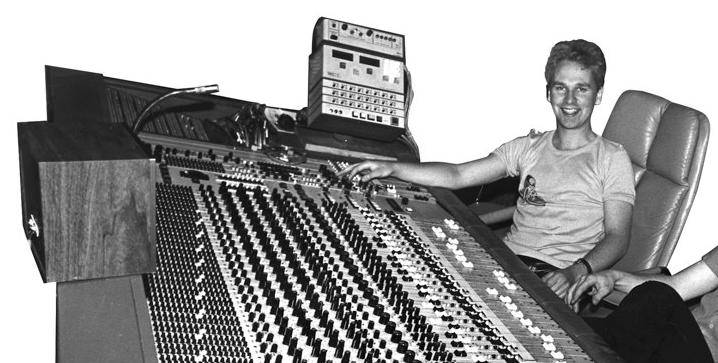
These
Gerry Rafferty sessions took place in Studio 2, which was a small and intimate
mix room designed by Eastlake Audio. Luckily, it had a small ‘overdub booth’
to the side. After an aborted first attempt by The Marquee to build a second
studio on the first floor, the re-design of the Marquee Studio 2 mix room was
completed by Eastlake Audio in around early 1977. I had engineered a few
sessions in there, some experimental, as well as the Berni Flint sessions that
led to his hit single ‘I Don’t Want To Put A Hold On You’ that same year.
The
studio control room was very small, with barely enough room for three people
behind the MCI JH-500 mixing console. For the Gerry Rafferty sessions, I was on
the right-hand side, controlling the tape machine remote control and the ‘master
fader’ and ‘group fader’ section of the console. Co-producer Hugh Murphy was
seated in the middle, and Gerry (also co-producer) was happy to be at the end,
on the left-hand side. My memories of the sessions are pretty vague, but it
seemed that Hugh was in charge of these mixing sessions. He was happy and
confident controlling the fader balances, but would leave most of the EQ
processing on the board and the external processing hardware, such as
compressors and so on, to me. We had two reverb plates available to us, but
very little else. Hugh had the vision of what was needed for the mixes, and was
continually checking with Gerry, who was very relaxed and clearly trusted Hugh.
I got the impression that Gerry’s co-production role had been completed
throughout the recording process and he was happy to take a back seat
throughout this initial mixing stage.
Some
overdubs were added during these sessions in the small-but-quite-comfortable overdub
booth, to the right of the control room. Percussion overdubs were added to
tracks like ‘City To City’, and some backing vocals were also added to a couple
of songs. It seemed as though these were last minute additions that had maybe been
missed at the main recording sessions at Chipping Norton Studios (in
Oxfordshire), where the bulk of the album had been recorded. No extra vocals
were added by Gerry and he seemed very happy with what had already been
recorded.
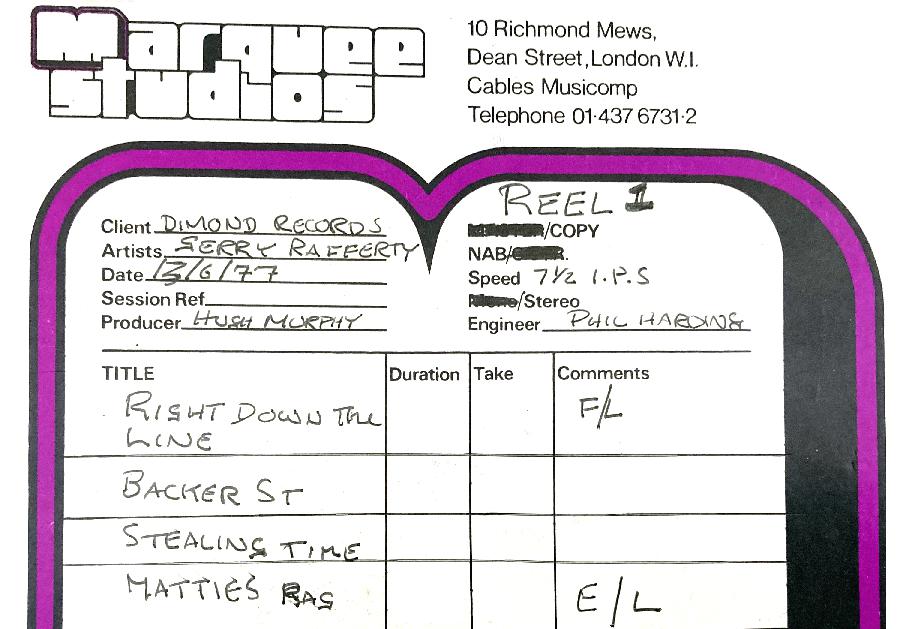
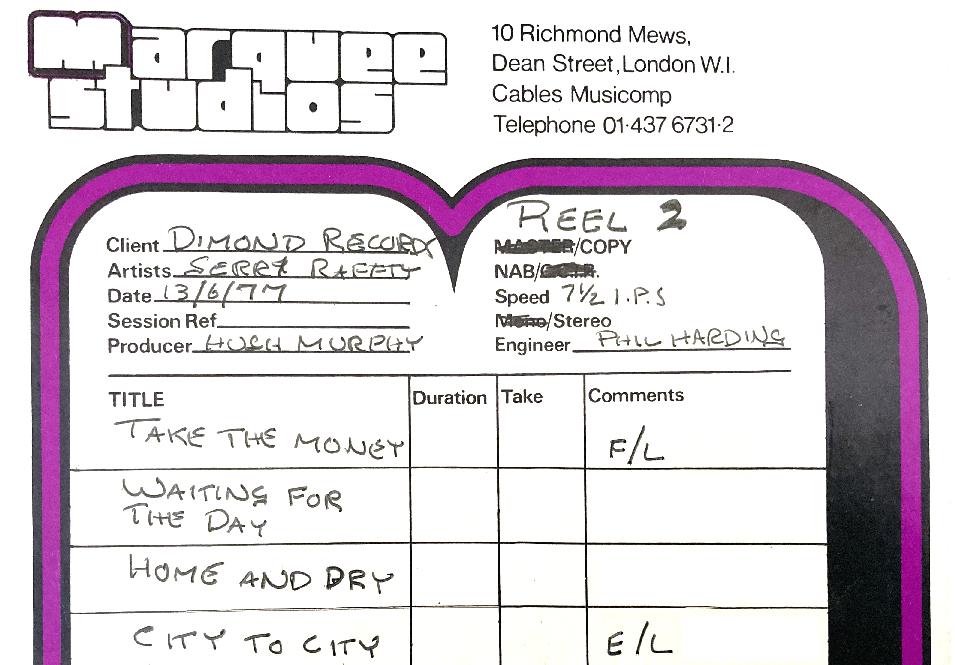
The
date shown on the two Marquee tape boxes from my analogue collection is ‘13th
June 1977’. This would have been the ‘copy’ date of these mixes, and I imagine
we would have been working on these eight tracks from late May 1977. It’s
interesting to note from my copy tapes that there are only eight songs, and that
‘Take The Money And Run’ was not used on the ‘City To City’ album, but appeared
on the ‘Night Owl’ album released in 1979. Other tracks, such as ‘The Ark’,
that were on the final ‘City To City’ album are missing from these sessions,
and I don’t recognise the song when listening to the final album. Either we
didn’t get on to mixing that in these ‘work in progress’ sessions, or it was
recorded after the Marquee sessions.
My
memory of the final session was a typical ‘album playback’ set-up for the
manager, label and musicians that could make it in. As I’ve said, space was
tight, so this was an uncomfortable event, where only a couple of people could
sit in the ideal central listening position. My lasting memory of this session,
where all eight tracks were played, was that the bass player made a very
damaging remark at the end, saying something like ‘I’ve heard this room can’t
be trusted’. That created an edgy atmosphere for the people present, and I did
my best to defend the quality of the room acoustics and their reliability, but
once someone says something like that, it is very difficult to recover from it.
I think that planted negative thoughts into the minds of producer Hugh Murphy and
the record company executives there. I remember being very happy with how
everything sounded, but clearly, at only 20 years old, I was very
inexperienced.
‘Baker Street’ Clip of early Phil Harding mix
(Archive sound quality)
‘City To City’ Clip of early Phil Harding mix
(Archive sound quality)
Listening
back to my mixes now, I can detect many problems with the balances and choices
made. It is unfortunate that the quality of my tapes has suffered due to
storage conditions, and even though I’ve baked them before digitising there is
a severe lack of high frequencies. Nevertheless, I can define a couple of major
problems...
- The
drums, in particular the kick and snare, are too loud. Certainly, a lot louder
than the balances on the final mixes on the album. I can understand why I would
have balanced the drums like that, because I had spent the last few years
working as assistant engineer on many sessions in Studio 1 with producer Gus Dudgeon
(Elton John mixes, Kiki Dee’s 1974 album ‘I Got The Music In Me’ and many
more). Gus was a big fan of loud drums, as many producers and engineers are,
but for the Gerry Rafferty album, I can now hear that this style of balance was
not appropriate. I don’t remember this being an issue with producer Hugh Murphy
or Gerry, but it was clearly my fault for setting that kind of precedent in the
mixes.
- The balance of the saxophone on ‘Baker Street’ is astonishingly quiet on my mixes compared the loud, strident sound on the final record. Clearly, someone had reviewed these Marquee mixes and made the point that the sax had to be a big feature on ‘Baker Street’, as we all love and know it to be now. That was a big mistake from my end, and whether it was Hugh and Gerry or the record company that pushed for the final balance – or possibly the final mix engineer (Dec O’Doherty at Advision Studios) – it was a stroke of genius, because the final mix from that point of view sounds wonderful and complete.
Other
than those two major points, everything else on my Marquee mixes (vocals/keyboards
and guitars) sound very similar. One of my lasting memories after these
sessions was playing these mixes at full blast in the studio to some of my
musician friends, including Dave Dale, and they were all blown away. Imagine
listening to an unreleased ‘Baker Street’ for the first time, in a fantastic high
quality studio environment! I was inspired that even though the sessions had
moved on elsewhere for remixing, I had done a good job to the best of my
ability at that time. My engineering skills and mixing abilities would improve
from that point on – and the following year, I completed successful mixes for
the Steve Hillage album ‘Open’ (released in 1979) and the huge Amii Stewart hit ‘Knock On Wood’ all in that very same mixing room at The Marquee.
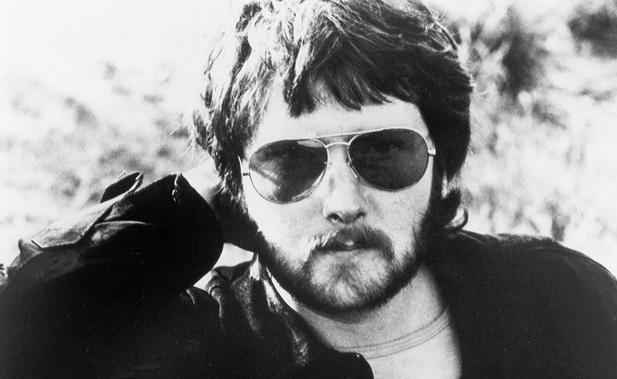
It
has been good for me to reflect on this project, as I had stored my memories of
these sessions together with the tapes for 40+ years without talking or thinking
about them until now. I know from my brief research for this blog that many
people around the world hold this album dearly in their memories. To have been
involved in some small way has truly been a wonderful honour for me. ‘Goldmine Music Collector’s Magazine’ describe it as...
“…One
of the quintessential albums of all time, on an equal footing as The Beatles’
‘Sgt. Pepper’s Lonely Hearts Club Band’, The Beach Boys’ ‘Pet Sounds’ and Pink
Floyd’s ‘The Dark Side of the Moon’. While Rafferty went on to write and record
further exemplary music, which by no means proved less superior, the immense
commercial success of ‘City to City’, and ‘Baker Street’ overshadowed
everything else he did. It is the one album that will forever be attached to
Rafferty’s legacy as his signature work, and also the one that firmly secured
his place in music history”. (Full article here)
Phil
Harding
September
2021